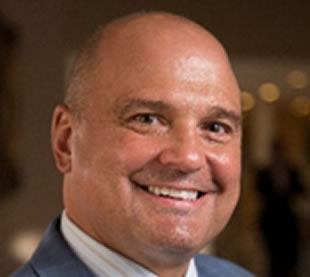
The Biggest Reasons You Don’t Control Your 401k Costs
I often read about how investors can lower their 401(k) costs, and the suggestion seems to be that participants have the power to control everything in their plan. This is not the case. The structure of a 401(k) plan doesn’t provide participants with all the power they need regarding costs. However, there are a few steps participants can take to better manage their assets. To better understand why participants do not have complete control over their investment decisions, I will offer a general outline of how 401(k) plans are often structured.
The management of a 401(k) plan is the responsibility of the Plan Sponsor (the company who offers the plan) and more specifically the plan trustees and other named fiduciaries. There are many important responsibilities of a 401(k) plan fiduciary, and the government takes adherence to these very seriously. Therefore, the Plan Sponsor has to spend a fair amount of time and money to maintain compliance with the ever-changing regulatory landscape. The end result is increased participant costs. The irony here is that the government wants participants to benefit from lower-cost investments, yet the costs to administer 401(k) and other retirement plans is significant and usually passed along to participants.
Given the numerous rules and regulations governing 401(k) plans, Plan Sponsors typically turn to:
- Recordkeepers and Third-Party Administrators
- Advisors who help manage the plan
- Investment managers who manage the assets
- Auditors (for plans with more than 100 participants).
There are several factors that determine the costs associated with each of these four activities. One main factor is the amount of assets and the number of participants in the Plan. This is why the proposed Secure Act, recently passed by the U.S. House of Representatives, includes provisions that would make it easier for small businesses to band together to offer 401(k) plans. By gaining increased scale, Plan Sponsors may be able to reduce the ‘per participant’ costs. Even with this provision, unless a Plan has $25 to $50 million or more in assets, it is still sometimes difficult for participants to get a low-cost investment lineup.
Plan Providers are required to review fees and benchmark their Plan to gauge its competitiveness. They are allowed to cover the costs of offering and administering the Plan, and they are not required to offer only the lowest-cost investments. Investors can talk with management about negotiating for lower costs from their providers; but if the overhead expense of the Plan is being absorbed by all participants (and not paid by the Company), costs may still be higher than expected. Participants can review the investment costs before making their investment decisions, but management determines which investments are available inside the 401(k) plan. Ultimately, 401(k) investors operate within a set cost structure.
The Company, or Plan Sponsor, is required to act in the sole interests of all participants and the group as a whole and not for any one individual. Even if low-cost index funds or ETFs are included they can be ‘marked up’ to cover their pro-rata share of the overhead expenses. Failure to share costs equally could benefit those invested in certain investments at the expense of the other participants. This is one reason ‘zero revenue’ share class investments are becoming more popular–they are more transparent and spread the costs equally to all participants.
As an advisor to 401(k) plans, I understand the focus on lowering costs and that a cost review is essential. However, while lower costs help participants there are other issues that are also very important. Education and the ability of people to find the money to save are also critical. According to a recent study, for workers in their 50s, the average 401(k) balance is less than $175,000. This underscores that the decision of how much to save is the most important retirement planning factor facing workers.
Hopefully, fees aren’t keeping anyone from saving in a 401(k) or another retirement plan. The tax savings that workers receive from contributing to a 401(k) plan are significant and can offset the fees or costs of deferring into an even higher-cost plan. Remember, if you feel your employer doesn’t offer a competitive cost structure, there is nothing stopping you from letting the Plan Administrators know your concerns. You can also communicate with them about the quality of the investments as well as ongoing financial education.
Saving is always a good thing, and if investment costs aren’t to your satisfaction, you may, subject to certain limits, invest in your own self-directed IRA or Roth IRA. And don’t forget about your HSA (Health Savings Account) –you can let the money inside your HSA plan grow tax-free just like a Roth IRA, provided you ultimately use the funds for qualified medical expenses.




Engage us on Facebook
Follow us on Twitter
Tweets by @mymcmedia